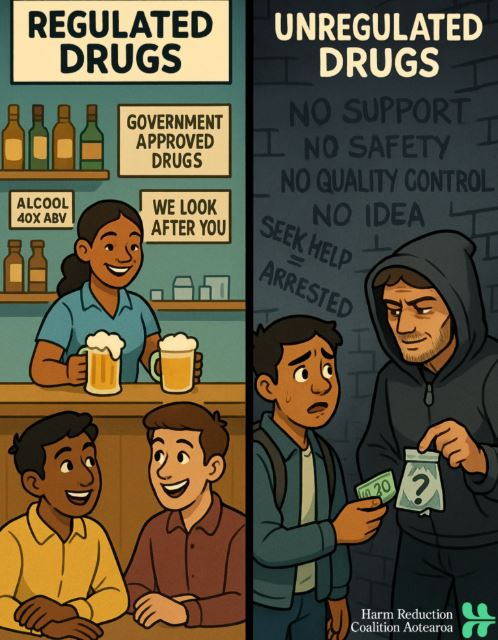Filter magazine has a great article “Overdoses Should Be Termed “Prohibition-Related Deaths” that argues that our overdose deaths are caused by the prohibition environment that makes drugs more dangerous than they should be and drives drug users into the shadows where they use in places where they are unlikely to be found if they overdose. 91% of all people who die of overdose die using alone.
Recently in Connecticut an effort to create Overdose Prevention Centers (OPCs) was derailed in the legislature. These are places where people can use dangerous street drugs in a safe environment. I have heard advocates for OPCs argue that we already have public consumptions sites for other drugs (alcohol), and these places are called bars.
When you walk into a bar, and you order alcohol, you know exactly what you are getting. A beer that advertises 6.2% alcohol delivers that exact same amount every time because the products sold in the bar are subject to government safety standards. If someone has a medical event at the bar, help is there. If someone gets out of hand, they are cut off.
Conversely, people who buy street drugs have no way of knowing how strong their $3 bag of fentanyl is. Does it contain 2% fentanyl or does it have 10%? Every bag varies widely because the drug is mixed not in a pharmaceutical laboratory, but in a dim drug dealer’s den where the drug is often mixed in a blender made for protein shakes.
The graphic that accompanies the article tells the story.

If we want to save lives, drug use should be in the open as it is with alcohol. We should begin talking about safe supply, legalization and regulation.
In the glossary of my recent book, A Family and Friend’s Guide to the Opioid Epidemic, I discuss the Iron Rule of Prohibition.
Iron Law of Prohibition- A theory proposed by the drug activist Cowan that states “as law enforcement becomes more intense, the potency of prohibited substances increases.” This was true during prohibition as hard liquor was easier to smuggle and more profitable than bootleg beer, and is certainly true in the opioid crisis as fentanyl, 50 times stronger than heroin, has come to almost entirely replace heroin due to ease of trafficking and higher profits.
